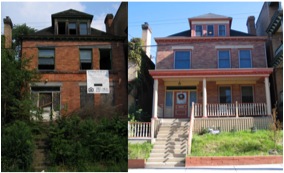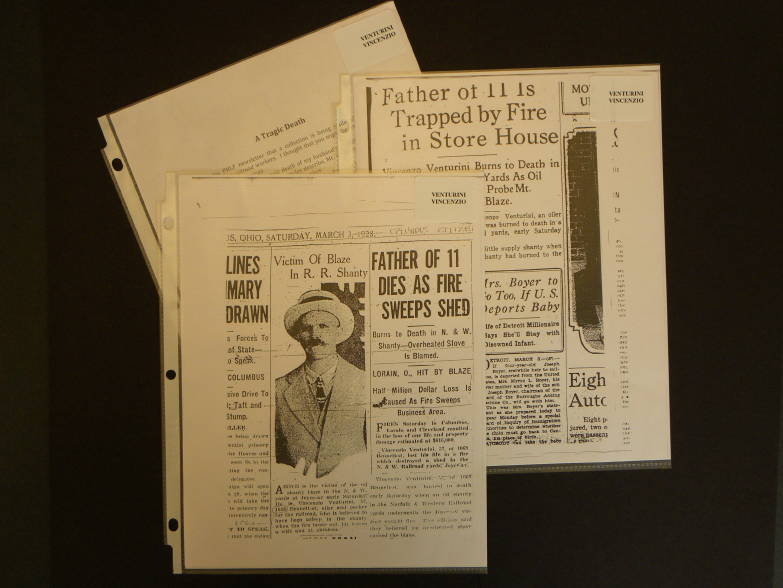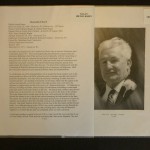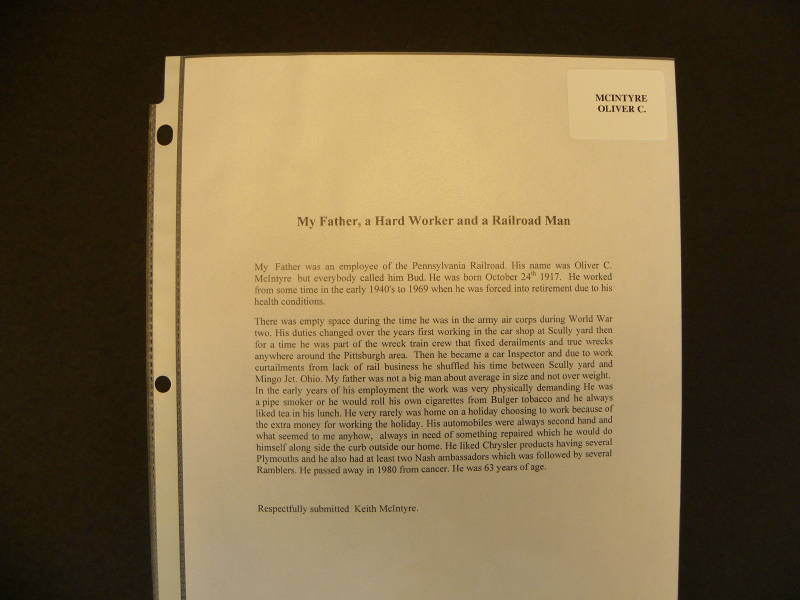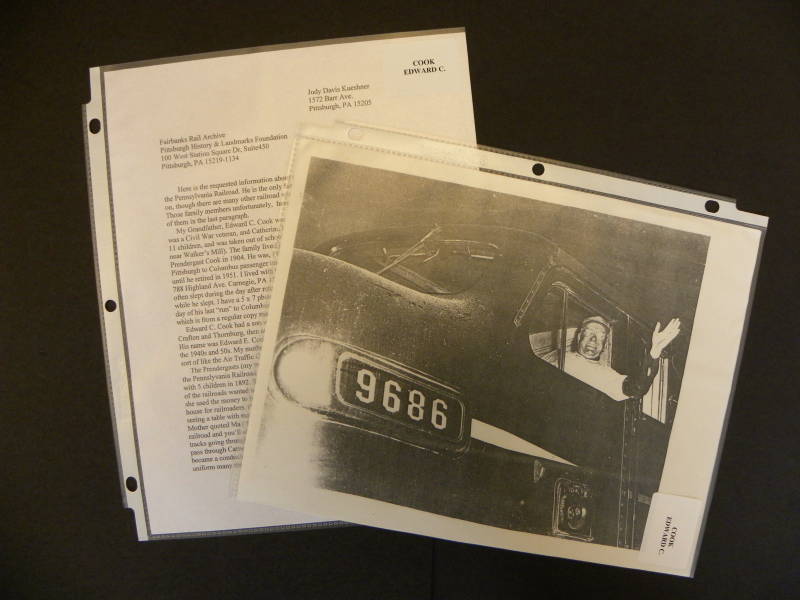
Category Archive: PHLF News
-
New Tax Law Extends Charitable IRA Rollover for 2010 and 2011
On Dec. 17, President Barack Obama signed the Tax Relief, Unemployment Insurance Reauthorization and Job Creation Act of 2010. Included in the package is an extension of charitable IRA rollovers. Here are some important provisions to note:
- Individuals age 70 ½ and older may once again request direct transfers of funds from Individual Retirement Accounts (IRAs) to Landmarks without income tax on gifted funds.
- The funds must be directly transferred from IRA accounts to Landmarks (donors should ask their IRA custodians for special forms to make these requests).
- Each individual is entitled to make a total of $100,000 in gifts to charities each year under this provision.
- If you have not yet taken your IRA Required Minimum Distributions (RMDs) for 2010, you may partially or wholly satisfy that requirement through an IRA rollover gift made by January 31, 2011.
- These contributions do not qualify donors for an additional charitable income tax deduction as not being taxed on the withdrawal is worth even more than a standard charitable deduction.
- Only standard IRAs and Roth IRA accounts qualify under this law; other retirement accounts such as 401(k), 403(b), SEP, KEOGH, and SIMPLE IRA plans cannot be used to make an IRA rollover gift.
- Donors of IRA rollover gifts must receive no personal benefits from this gift nor are they available for planned gifts such as charitable remainder trusts or gift annuities.
The provision is a significant opportunity for donors who:
- Hold assets in their IRAs that they do not need;
- Would like to make a large one-time gift;
- Are subject to the two-percent rule that reduces itemized deductions;
- Do not itemize; or
- Plan to leave part or all of their IRA to Landmarks at death.
For more information on how the Charitable IRA Rollover may be beneficial to you and Landmarks, please contact our Director of Gift Planning, Jack Miller, at 412-471-5808, ext. 538 or jack@phlf.org.
-
PENNSYLVANIA AT RISK 2010 ANNOUNCED
December 16, 2010
PENNSYLVANIA AT RISK 2010 ANNOUNCED
Preservation Pennsylvania announces the annual listing of the Commonwealth’s most endangered historic resources.Preservation Pennsylvania, a statewide non-profit historic preservation group, released its annual Pennsylvania At Risk list today, which highlights 11 endangered resources.
Pennsylvania At Risk serves as a representative sampling of the Commonwealth’s most endangered historic resources. For the purpose of the list, endangerment is defined as threat of demolition, significant deterioration, vandalism, alteration, and/or loss of its historic setting. It is Preservation Pennsylvania’s belief that publishing this list draws statewide attention to the plight of Pennsylvania’s historic resources, promotes local action to protect resources, and encourages additional state funding for historic sites.
Resources included on the Pennsylvania At Risk 2010 list include:
East Stroudsburg Railroad Station (East Stroudsburg, Monroe County)
Built in 1864 as the Stroudsburg station on the Delaware, Lackawanna and Western Railroad, the East Stroudsburg Railroad Station is a landmark in the community. The depot’s presence led to rapid commercial growth, establishing Crystal Street as the business hub of a rapidly expanding community. Thanks to the efforts of East Stroudsburg’s residents and supporters, and the partnerships between community groups, non-profits, private corporations and individuals and the borough, the building was saved earlier this year after demolition of the station had begun. However, initial funding to save the 1883 building only covers partial reconstruction and restoration, so efforts to secure the long-term future of the station will need to continue.U.S.S. Olympia (Philadelphia, Philadelphia County)
Built by the United Iron Works of San Francisco in 1890-1893 and commissioned in 1895, the cruiser U.S.S. Olympia is a National Historic Landmark that represents critical points in American history. She served as the flagship of the Asiatic Squadron in the Spanish-American War, and it was from the Olympia’s bridge on May 1, 1898 during the Battle of Manila that
Commodore George Dewey issued the famous command: “You may fire when you are ready, Gridley.” Its final mission was bringing home the body of World War I’s Unknown Soldier fromFrance in 1921. It was decommissioned in 1922, then opened as a museum in 1958. Since taking ownership of the ship in 1996, the Independence Seaport Museum in Philadelphia has spent $5.5 million on repairs, inspections and maintenance of the Olympia; yet, without major a refurbishment and plans for its future use/preservation, the Olympia will either sink at its moorings, be sold for scrap, or be scuttled for an artificial reef off Cape May, New Jersey. While efforts to secure private or public funding for the project have been unsuccessful to date, the National Park Service has begun working with stakeholders to seek a positive preservation outcome. The U.S.S. Olympia was scheduled to close to the public November 22, 2010. However, it was recently announced that she will remain open until January.
Schuylkill School (Schuylkill Township, Chester County)
Schuylkill School was built in 1930 and brought children together from a number of area one- and two-room schoolhouses. Construction of the school was made possible through the philanthropy of Frank B. Foster, who helped fund three consolidated schools in Chester County (the other two of which are still in use). In 2002, the Schuylkill School was determined eligible for inclusion in the National Register of Historic Places; that same year the Phoenixville Area School District began to consider the school’s demolition. Despite studies that have identified several potential new uses for the building, the Phoenixville Area School District plans to begin demolishing the building in December 2010. The ground where the historic school now stands will become a parking lot.Stewartstown Railroad (Stewartstown to New Freedom, York County)
From 1884 to 1972, the Stewartstown Railroad connected farmers and manufacturers to markets in Baltimore. The Stewartstown Railroad remains in business under its original charter of 1884–the only such operation in existence that did not merge with another railroad or was subjected to any form of corporate reorganization. Seven railroad structures along the 7.4-mile line have been listed in the National Register of Historic Places and the line itself has been determined eligible for inclusion in the National Register. The financial generosity of George Hart, President of the Stewartstown Railroad, kept the company operational through recent tough times; however, this resulted in a substantial lien against the railroad. Arrangements to forgive the $352,000 sum were not made in Mr. Hart’s estate plans as expected. Now, unless the Bucks County Historical Society, beneficiary of Mr. Hart’s estate, will agree to defer payment of the lien for several years, the Stewartstown Railroad would be forced to liquidate its assets to raise the $352,000 that it owes.Holland Hall “Huidekoper Mansion” (Meadville, Crawford County) Holland Hall was built by Arthur Clark (A.C.) Huidekoper in 1899 and it survives as Meadville’s only Gilded Age mansion. Holland Hall is currently threatened with demolition. Following the death of Frances Reynolds Huidekoper in 1932, Holland Hall was occupied by Allegheny College’s Phi Delta Theta fraternity who occupied it from 1935 until 1995. It was then sold and has remained vacant for fifteen years. In order to prevent the demolition or continued neglect of Holland Hall, a buyer interested in acquiring and rehabilitating this architecturally significant building is needed.
“Plantation Plenty” Isaac Manchester Farm (Avella, Independence Township, Washington County) Plantation Plenty is a farm of just over 400 acres that has been owned and occupied by the members of the Manchester family for 210 years. The house, completed by Isaac Manchester in 1815, is one of the finest examples of Georgian architecture in Western Pennsylvania. The property is currently operating as a multi-faceted organic farm, producing milk, beef, pork, eggs and a variety of fruits and vegetables. While much of the significance of Plantation Plenty is clearly visible through its buildings, it also contains potentially important prehistoric and historic archaeological sites. Despite the property’s importance, it is now threatened by longwall mining. Subsidence caused by longwall mining under the farm, which causes the ground to drop between 4 and 6 feet at the surface, may cause severe damage to the historic buildings, and will fracture the rock that forms springs and wells which may alter or eliminate them. In addition, a large ventilation shaft is proposed immediately adjacent to the 3-acre protected farmstead. This would be a visual intrusion on the historic farm, and would alter the farm’s setting by introducing noise inappropriate to the quiet, agrarian landscape.
122-124 and 126 West Miner Street (West Chester, Chester County)
The National Register listed West Chester Historic District (Boundary Increase) is locally significant as a governmental and commercial center that reflects period architectural styles and the community’s development. Residential structures built circa 1844 and 1837, respectively, the buildings at 122-124 and 126 West Miner Street in West Chester are contributing elements to the West Chester Historic District. Both buildings are currently threatened with demolition. They are owned by the adjacent First Presbyterian Church, which proposes to tear them down to make room for additional facilities. The current proposal is a complete reversal from the Church’s originally presented plan which incorporated the two buildings into the expanded facility. The demolition of these two historic buildings will result in a significant loss of the community’s historic fabric and will erode the historic character of the larger community.Laverock Hill “Sims” Estate (Cheltenham & Springfield Townships, Montgomery County)
One of the last intact Gilded Age country estates in Montgomery County, the centerpiece of the Laverock Hill Estate is an 11,000 square foot residence created in a neo-Georgian style. The 42-acre property also includes a 19th century stone dwelling, the farm’s original horse and cattle barn, the former dairy barn (now a residence), and four additional dwellings. The Laverock Hill mansion has been vacant for nearly three years, as have the stable, carriage house and greenhouse. In early 2008, Hansen Properties, LLC acquired the 42-acre tract, and proposed a development that would include 216 residential units targeted for sale/rental to adults age 55 and over. No plans have been submitted yet for the portion of the property in Springfield Township, but the developer has expressed an interest in building at least 120 cluster housing units with requisite parking, roads and utilities on that portion of the estate. The property has been determined eligible for inclusion in the National Register of Historic Places, however, it is not located in a local historic district that is regulated by a historic preservation ordinance. In an attempt to preserve the site, over 150 neighboring families have informally organized into a group called Save Laverock Hill. Their goal is to have the current permit application denied, and to work to find an alternative plan for the use of the property.Dutch Corner Rural Historic District (Bedford Township, Bedford County)
The Dutch Corner Rural Historic District includes over 30 historic farmsteads as well as a church, a school and multiple cemeteries. Evitts Mountain is a dominant natural feature that clearly forms the physical, visual and legal edge of the Dutch Corner district. Atlantic Wind, LLC, a subsidiary of Iberdrola Renewables, proposes to develop 24 40-story wind turbines in a chain along the top of Evitts Mountain, surrounding Dutch Corner on two sides. The development will involve removal of trees from the mountain, as well as blasting and bulldozing rock then pulverizing it for use as fill to flatten the mountain top for the turbine pads, access road and cable trench. In addition to reshaping the mountain, the blasting will fracture the bedrock and disrupt the flow of groundwater to the area. Operation of the wind turbines will result in a noise increase of 15 to 20 dBA, replacing the natural sounds of a rural community with constant noise. This development will result in drastic changes to the Dutch Corner Rural Historic District, and will severely compromise qualities of the district that contribute to its significance.Eagles Mere Historic District (Eagles Mere, Sullivan County)
Eagles Mere Historic District is an intact turn-of-the-century resort community consisting of cottages, boat houses, commercial buildings, churches and outbuildings situated around a natural spring-fed lake 2,100 feet above sea level in the Allegheny Mountains. The district also includes Eagles Mere Beach, hiking trails, pristine wooded areas, and is surrounded by thousands of acres of forest. Since its establishment in the 1880s, people have been working to preserve Eagles Mere as a secluded retreat for visitors and residents. However, the setting of this historic district is currently threatened by natural gas extraction from Marcellus shale. Unlike many places whose economy could benefit from natural gas extraction, if the District’s water supply/quality is damaged, its beautiful setting is altered, or the peaceful, secluded nature of the area is disrupted by increased truck traffic and the operation of heavy equipment, those very features that make Eagles Mere attractive and economically viable will be lost.
Neuweiler Brewery (Allentown, Lehigh County)
Construction of this large brewery began in 1911 and the facility opened in 1913 producing traditional German style beers. Designed by architects Peuckert and Wunder to satisfy the demands of owner Louis F. Neuweiler, the brewery was more elaborately adorned than most industrial facilities of its day. The company closed its doors in 1968, and the site has remained mostly vacant since then. Underutilization of the buildings has led to their neglect and deterioration, which threaten the resource’s survival. The Redevelopment Authority of the City of Allentown (RACA) now owns the property. Recognizing its significance, they have conducted a study that shows that the vast majority of the complex is still structurally sounds. RACA is taking initial steps to facilitate rehabilitation of the brewery, but a developer will be needed to complete the rehabilitation and put the building back in use to prevent further deterioration or the need for demolition.
Updates on Previously Listed Properties
The Pennsylvania At Risk list also includes updates on previously listed properties. Articles about the J. W. Cooper High School Shenandoah, Schuylkill County (PA At Risk 2001); Saylor Cement Kilns Coplay, Lehigh County (PA At Risk 2005); and Church of the Assumption on Spring Garden Street, Philadelphia (PA At Risk 2009) are featured in the 2010 issue. For additional information on updates, please see the attached link for the Pennsylvania At Risk publication or contact Preservation Pennsylvania at 717-234-2310.
The Pennsylvania At Risk 2010 list is released in partnership with the Pennsylvania Historical and Museum Committee (www.phmc.state.pa.us). Preservation Pennsylvania is a statewide, not-for-profit, educational and advocacy historic preservation organization and serves as a statewide voice on historic preservation issues. For more information, visit the website at www.preservationpa.org or contact Preservation Pennsylvania at 717-234-2310.
-
Heinz Students Uncover Market For Renovated Housing in Wilkinsburg
For a project sponsored by the Pittsburgh History and Landmarks Foundation, a team of Heinz students established a latent market for restored homes in Wilkinsburg. Advised by Jerry Paytaz, director of Economic Architecture at GSP Consulting, the team first conducted interviews of development experts across the nation, and two community focus groups. Based on this feedback the team developed six profiles of potential buyers for restored homes in Wilkinsburg: Urban Pioneer, Bo-Ho, Eco-Homesteader, Wilkinsburg Ties, Start-Up, and Retired Renovator. Next, the team developed and implemented a survey to assess likely demand and price points for fully restored homes, and two types of shell only restorations (dry-wall and stud) near Hamnett Place in Wilkinsburg. Response to the survey was high and favorable. Over 400 people responded, with 266 with ties to Wilkinsburg. Over 350 respondents indicated that they would be willing to purchase a fully renvated home in Wilkinsburg and over 250 would be willing to purchase a shell renovation with the kitchen and bathroom completed. These findings helped pave the way for new investment in Wilkinsburg, and represent a major contribution to PHLF’s ongoing efforts to address significant barriers to investment in the community. Contact Michael Sriprasert for a copy of this report.
-
Fairbanks Feature: A New Train of Thought— Missing from the Fairbanks Archive!
James D. Van Trump Library | Frank B. Fairbanks Transportation Archive | Fairbanks Features
 Showcasing a variety of materials located in the Frank B. Fairbanks Rail Transportation Archive
Showcasing a variety of materials located in the Frank B. Fairbanks Rail Transportation ArchiveNo. 8 Presentation
Fairbanks Feature: Missing from the Fairbanks Archive!
The Archive is seeking biographical sketches of family members and/or friends who were involved in some capacity of railroad employment. Currently we have vignettes about railroaders who worked in various parts of the country and in some cases lived very early in the 20th century.
Pittsburgh-area railroaders should certainly be written about and their work stories submitted to the Archive. These people worked long, hard, and many times dangerous days. We need to have a record of their professional experiences. All stories can be as long or short as the writer wishes (one page or more). Any pictures of the railroader or related paper memories can be added, but are not necessary.
The stories are cataloged by family name in our data base, cross referenced with the specific railroads mentioned, and available to be read by all who visit the Archive. This will be a chance to leave a record for railroad history.
MISSING––yes! All those biographical sketches that as of yet have not been sent by mail or e-mail to the Fairbanks Transportation Archive. Stories can be mailed to:
Judith Harvey, Librarian
Fairbanks Rail Transportation Archive
100 West Station Square Drive, Suite 400
Pittsburgh, PA 15219
Or e-mailed to: fairbanksarchives@phlf.org
- “A Tragic Death,” a story of Venturini Vincenzio, oiler and packer in the Norfolk & Western yard, Columbus. Written by Ann Kelton, wife of her husband’s grandfather.
- “My Father on a Run-a-way Train,” a story about Martin Joseph Ragan, employed by the Conemaugh & Blacklick Railroad, operating inside the Johnstown Bethlehem Steel Plant. Written by his son Ronald W. Ragan.
- “My Father, a Hard Worker and a Railroad Man,” a story about Oliver C. McIntyre, who worked in the Scully yard on the wreck train crew and later as a car Inspector, for the Pennsylvania RR. Article respectfully submitted by his son Keith McIntyre.
- “Go to Work for the Railroad and You Will Always Have a Job,” a story about the author’s grandfather (Edward C. Cook), an engineer on the Pennsylvania RR, and other family members. One relative who ran a boarding house in Carnegie for railroaders was sure the trains would run forever; there were 14 sets of tracks in the town. Written by granddaughter Judy Davis Kueshner.
- “From Telegraph Operator to Superintendent Labor & Wages,” a story about Harry K. Brady (a Pennsylvania railroader from 1884-1930), who had eight very different jobs. The author outlines these jobs and reports on the 1905 train situation that made it necessary to be “railroad creative” on the inaugural run of “The Pennsylvania Special”––and a world speed record was set in the process. Written by grandson H. William Brady.
The Frank B. Fairbanks Rail Transportation Archive is open by appointment on Mondays, from 10:00 a.m. to 5:00 p.m. Use of the archive is free to PHLF members (one of the benefits!); non-members are assessed a $10 use fee.
The Archive is located on the fourth floor of The Landmarks Building at Station Square, in the offices of the Pittsburgh History & Landmarks Foundation.
To schedule an appointment, email the Librarian James Halttunen: James@phlf.org
-
Preserve Pittsburgh Community Meetings in December
PHLF News
November 17, 2010Preserve Pittsburgh, a component of PlanPGH (www.planpgh.com) is discussing cultural heritage and historic preservation, specifically the draft recommendations for the PreservePGH component of PLANPGH.
PLANPGH is pittsburgh’s first ever comprehensive plan–it will be the gameplan for the City’s growth over the next 25 years.
The goal of the PreservePGH component is to develop policies and strategies for the protection and preservation of Pittsburgh’s historic and cultural assets.
Monday, December 6th
6:30 to 8:00pm
South Side Market House
1 Bedford Square (S 12th St at Bingham St.)
South Side FlatsTuesday, December 17th
6:30 to 8:00pm
new Hazlett Theatre
5 Allegheny Square East
Allegheny CenterMonday, December 13th
6:30 to 8:00pm
Bakery Square
6425 Penn Ave
Larimer/Shadyside
(Park in the Bakery Square garage) -
Housing Renewal Under Way in Wilkinsburg
Thursday, October 14, 2010By Len Barcousky, Pittsburgh Post-GazetteMichael Sriprasert promised Wilkinsburg residents on Tuesday that they would have new neighbors next fall.
Mr. Sriprasert, director of real estate development for the Pittsburgh History & Landmarks Foundation, is overseeing two new housing projects in Wilkinsburg worth almost $10 million.
“By this time next year, we’ll have 27 new families moving in,” he said.
He was one of 10 speakers representing a consortium of government agencies, foundations and financial institutions that have undertaken housing restoration projects in the borough’s Hamnett Place neighborhood.
The session to announce the two latest elements in the renewal plan was held at the new Landmarks Housing Resource Center on Rebecca Avenue.
“This investment will expand our ability to attract people back to Wilkinsburg,” Mayor John Thompson said.
The larger effort is an $8.6 million renovation of two early 20th century apartment houses. They are the Crescent Building, at Rebecca and Kelly avenues, and the Wilson Building, about a block away on Jeanette Street.
Both structures are in poor shape. A portion of the roof of the three-story Crescent Building, for example, has collapsed.
The two apartments have long been eyesores, officials said.
“If we can restore the Crescent Building, that will build belief in Wilkinsburg,” said county Councilman William Robinson, D-Hill District. His council district includes Wilkinsburg.
When work is completed next year, the two buildings will have a total of 27 one-, two- and three-bedroom apartments. Each building will have a community room, laundry area and computer lab. Hosanna House will provide support services to tenants, who must meet income guidelines.
The second project, budgeted at slightly more than $1 million, will restore three abandoned but architecturally significant homes on Jeanette Street and Holland Avenue. When renovations are complete, those homes will be for sale to buyers who have earnings no greater than 120 percent of the area’s median income.
The apartment project also involves acquisition and demolition of three neighboring structures. It is being funded by loans and grants from Allegheny County’s Department of Economic Development, funds raised by the sale of Historic Tax Credits, private dollars from the Federal Home Loan Bank of Pittsburgh and federal tax credits administered through the Pennsylvania Housing Finance Agency.
Money for restoration of the three homes is being provided by Allegheny County and the Scaife Foundations.
Four other homes in the neighborhood have been renovated recently with help from the county and the Scaife Foundations. They have been sold and four families have moved in, Mr. Sriprasert said.
The restoration costs for the houses and the apartments are more than $300,000 per unit, about four times the median cost of a home in Wilkinsburg.
Those costs are high because of the dilapidated condition of the structures and because restoration, which often is more expensive than demolition and new construction, will save architecturally interesting buildings, Mr. Sriprasert said. The project is being funded in part with historic tax credits, which means it has to meet strict criteria for restoration, he said.
Supporters hope the restoration projects will produce a ripple effect, Mr. Sriprasert said, encouraging businesses and homeowners to invest private dollars in the neighborhood.
Tuesday morning’s program also marked the grand opening of the Pittsburgh History and Landmarks Foundation’s housing resource center. It is located at Jeanette Street and Rebecca Avenue in a former Packard dealership.
It will provide workshops and programs dealing with home improvements and resource-saving “green” projects for Wilkinsburg residents,
The Landmarks Housing Resource Center will have a community open house for people in the neighborhood at 11 a.m. Saturday. That event will be followed at 12:45 p.m. by an inaugural workshop on the topic of restoring vacant lots as gardens and green spaces.
The cost for the workshop is $7. To register, call 412-471-5808, ext. 527, or e-mail marylu@phlf.org.
Read more: http://www.post-gazette.com/pg/10287/1094983-56.stm#ixzz12LBsaQs1
-
Projects Pump $10 Million into Wilkinsburg Homes
By Chris Ramirez
PITTSBURGH TRIBUNE-REVIEW
Wednesday, October 13, 2010
Last updated: 8:02 am
Jay Willis plays the saxophone during a dedication of a mural Tuesday evening in Wilkinsburg. The Wilkinsburg Community Development Corp. dedicated the mural as part of the organization's public art program to preserve, restore and enhance the borough's appearance through artistic expression. Justin Merriman | Tribune-Review
With gaping holes from its broken windows, the fenced-in brick building at Rebecca and Kelly avenues in Wilkinsburg is an eyesore, one that’s too big to ignore.
People moved out of the three-story fixer-upper a long time ago, before Vanessa McCarthy-Johnson or anyone else can seem to remember. Pigeons and blackbirds live there now.
“When a kid walks by these buildings and sees that … no one cares about it, it tells them adults don’t care,” said McCarthy-Johnson, a borough council member. “Youths need to see things moving on and improving. They need to see things turn around.”
They soon will.
A public-private partnership on Tuesday detailed plans to invest $10 million in house-restoration projects in Wilkinsburg.
A total of $8.8 million will pay for renovating two early 20th century apartment houses — the Crescent Building at Rebecca and Kelly, and the Wilson Building on Jeanette Street.
Borough officials and investment groups say restoring housing would be key to turning around the neighborhood, which has been blighted by crime and struggling for a defined economic blueprint since the demise of the steel industry in the 1970s and ’80s.
About 19,000 people live in Wilkinsburg, where unemployment is about 9 percent. Nail salons, barber shops and mom-and-pop businesses line most of its main thoroughfare, Penn Avenue, offering little variety or chance for jobs.
“This is a huge investment that we hope will eventually attract more new families to move here,” Mayor John Thompson said.
The two buildings will house 27 one-, two- and three-bedroom apartments. Each apartment building will have a community room, laundry area and computer lab. Hosanna House, a community center and social services agency in Wilkinsburg, will provide support services to tenants.
The project, which includes acquiring and demolishing three neighboring structures, is being paid for with loans and grants from Allegheny County, Historic Tax Credit Equity, Federal Home Loan Bank of Pittsburgh and federal stimulus money that Pittsburgh History & Landmarks Foundation is administering.
Work on the apartment buildings is expected to wrap up next year.
A second project — paid for by Allegheny County and the Scaife Foundations — will restore three vacant homes at Jeanette and Holland Avenue for $1 million. Once they are renovated, they will be sold to buyers.
“Affordable housing shouldn’t ever be difficult,” said Brian Hudson, executive director for the Pennsylvania Housing Finance Agency. “This partnership will make homeownership possible for a lot of people.”

Pittsburgh History & Landmarks Foundation President Arthur Ziegler is seeing to it that new life is breathed into the Crescent Building at Rebecca and Kelly avenues in Wilkinsburg. The early 20th century apartment house is one of two such buildings in the community that will be renovated. Philip G. Pavely | Tribune-Review
Last year, TriState Capital Bank pledged $1.8 million over six years to help Wilkinsburg continue its housing renovation and development projects.
“Positive change is happening in Wilkinsburg,” TriState President A. William “Bill” Schenck III said. “And it’s happening because people have said they want it to happen and are behind what’s going on here.”

The inside of the newly renovated Pittsburgh History & Landmarks Foundation's housing resource center in Wilkinsburg, formerly a Packard dealership, will house a sculptor. The center will provide workshops and programs dealing with home improvements. A neighborhood open house is scheduled for 11 a.m. Saturday, with a workshop on restoring vacant lots as gardens and green spaces. Philip G. Pavely | Tribune-Review
Pittsburgh History & Landmarks Foundation yesterday opened its housing resource center, located in a former Packard dealership in Wilkinsburg. It will provide workshops and programs dealing with home improvements. A neighborhood open house is scheduled for 11 a.m. Saturday, with a workshop on restoring vacant lots as gardens and green spaces.
-
Last Chance to be Recognized for Supporting the Jury Assignment Room Restoration
PHLF News
October 1, 2010PHLF, in collaboration with the Allegheny County Historic Properties Committee and PHLF trustee Judge Rayond Novak, continues to lead the restoration of the Jury Assignment Room in the City-County Building––one of Pittsburgh’s most significant landmarks.
Restoration work completed to date, thanks to contributions from 90 donors, includes: replacing the window coverings, re-upholstering the chairs, repainting the metal bases of the chairs and installing new carpet. New historically-appropriate lighting fixtures are to be installed by the end of the year, and other work will be completed as funding permits.
A bronze plaque will be installed in the Jury Assignment Room to honor corporations, foundations, and law firms who have made donations in the following categories: $25,000, $10,000, $5,000, and $1,000, and individuals who have made donations of $500 or more. The plaque will be ordered on November 1, 2010.
To be recognized on the plaque, please make you tax-deductible contribution to PHLF by October 29, 2010.
Please send checks payable to PHLF and referencing the Assignment Room to:
Pittsburgh History & Landmarks Foundation
100 W. Station Square Drive, Suite 450
Pittsburgh, PA 15219
Attn: Mary Lu DennyOr make a donation using a credit card. PHLF accepts American Express, Visa, Discovery, and Mastercard.
For questions on the Jury Assignment Room Restoration project, please contact Anne Nelson at (412) 471-5808 or anne@phlf.org.

